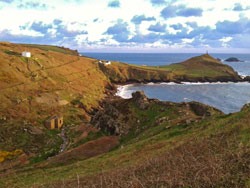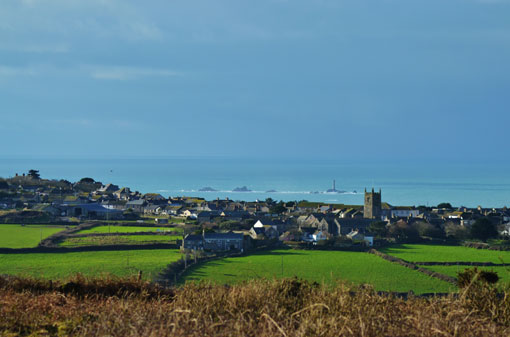

St Just
Few towns have retained their character in this century as St Just, the first and last town in England, has.
Once it was the mining centre of the peninsula and disused engine houses predominate the landscape. In the centre of the town is Plain-an- Gwarry, a theatre used for miracle plays in medieval times.
The fifteenth century church includes part of the 1336 building and a three foot high pillar, the Selus Stone, with a Roman inscription and a Greek monogram in the north aisle was found 150 years ago.
St Just’s history is typical of the whole area, rich in mining, farming and fishing from remote times. Everywhere can be seen monuments of this, often amid the moorland, heather and gorse.Carn Kenidjack – the Hooting Carn – the cliffs of Carn Gloose, and a path to Cot Valley, as well as the lovely valley of Nanquidno.
Cape Cornwall
The spectacular hump-backed Cape Cornwall, with its 138 year old mine chimney stack, is the only cape where two oceans meet in England. It rears 229 feet out of the sea to a summit which offers a 270 degree view over the Western Approaches……well worth the steep climb.. Rare plants and birds give the area an extra special appeal today. The headland in (mostly) managed under the stewardship of the National Trust. There is a small car park available – but no other facilities.
Cape Cornwall was a bronze age settlement – which along with the nearby cliff castle at Kenidjack was probably in use up until the Iron Age.
The Brisons, are two offshore rocks, lying approximately 1.6 kilometers to the south west of the Cape. The rocks are 22 and 37 meters in height -their name comes from the French wordbrisant, ‘reef, breaker’. The Brisons and the underwater reef that connects them Gribba Point, has caused many a shipwreck.
